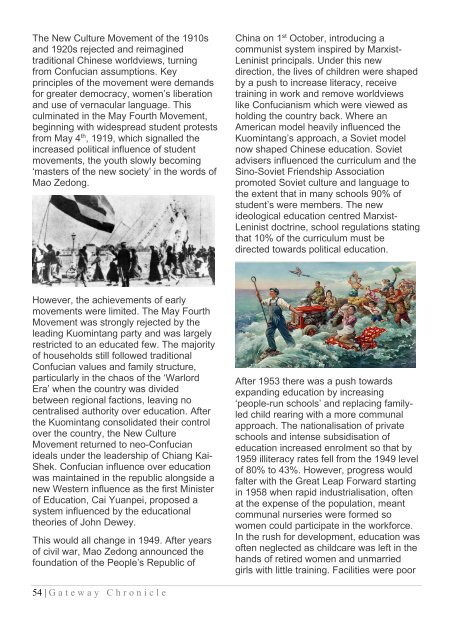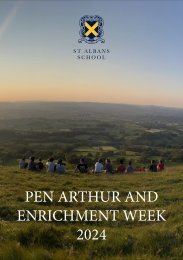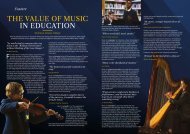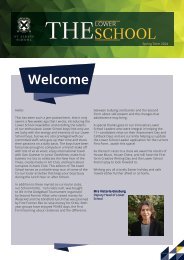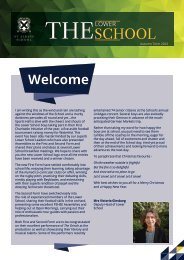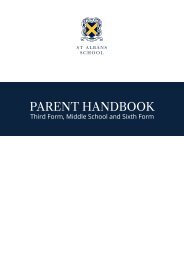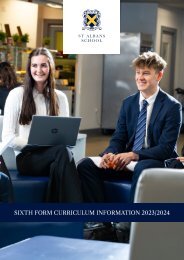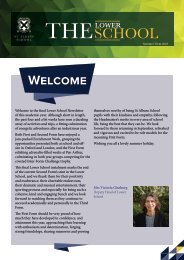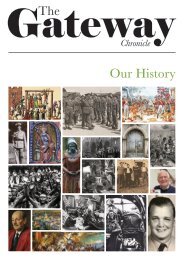Gateway Chronicle 2022
You also want an ePaper? Increase the reach of your titles
YUMPU automatically turns print PDFs into web optimized ePapers that Google loves.
The New Culture Movement of the 1910s<br />
and 1920s rejected and reimagined<br />
traditional Chinese worldviews, turning<br />
from Confucian assumptions. Key<br />
principles of the movement were demands<br />
for greater democracy, women’s liberation<br />
and use of vernacular language. This<br />
culminated in the May Fourth Movement,<br />
beginning with widespread student protests<br />
from May 4 th , 1919, which signalled the<br />
increased political influence of student<br />
movements, the youth slowly becoming<br />
‘masters of the new society’ in the words of<br />
Mao Zedong.<br />
China on 1 st October, introducing a<br />
communist system inspired by Marxist-<br />
Leninist principals. Under this new<br />
direction, the lives of children were shaped<br />
by a push to increase literacy, receive<br />
training in work and remove worldviews<br />
like Confucianism which were viewed as<br />
holding the country back. Where an<br />
American model heavily influenced the<br />
Kuomintang’s approach, a Soviet model<br />
now shaped Chinese education. Soviet<br />
advisers influenced the curriculum and the<br />
Sino-Soviet Friendship Association<br />
promoted Soviet culture and language to<br />
the extent that in many schools 90% of<br />
student’s were members. The new<br />
ideological education centred Marxist-<br />
Leninist doctrine, school regulations stating<br />
that 10% of the curriculum must be<br />
directed towards political education.<br />
However, the achievements of early<br />
movements were limited. The May Fourth<br />
Movement was strongly rejected by the<br />
leading Kuomintang party and was largely<br />
restricted to an educated few. The majority<br />
of households still followed traditional<br />
Confucian values and family structure,<br />
particularly in the chaos of the ‘Warlord<br />
Era’ when the country was divided<br />
between regional factions, leaving no<br />
centralised authority over education. After<br />
the Kuomintang consolidated their control<br />
over the country, the New Culture<br />
Movement returned to neo-Confucian<br />
ideals under the leadership of Chiang Kai-<br />
Shek. Confucian influence over education<br />
was maintained in the republic alongside a<br />
new Western influence as the first Minister<br />
of Education, Cai Yuanpei, proposed a<br />
system influenced by the educational<br />
theories of John Dewey.<br />
This would all change in 1949. After years<br />
of civil war, Mao Zedong announced the<br />
foundation of the People’s Republic of<br />
After 1953 there was a push towards<br />
expanding education by increasing<br />
‘people-run schools’ and replacing familyled<br />
child rearing with a more communal<br />
approach. The nationalisation of private<br />
schools and intense subsidisation of<br />
education increased enrolment so that by<br />
1959 illiteracy rates fell from the 1949 level<br />
of 80% to 43%. However, progress would<br />
falter with the Great Leap Forward starting<br />
in 1958 when rapid industrialisation, often<br />
at the expense of the population, meant<br />
communal nurseries were formed so<br />
women could participate in the workforce.<br />
In the rush for development, education was<br />
often neglected as childcare was left in the<br />
hands of retired women and unmarried<br />
girls with little training. Facilities were poor<br />
54 | G ateway <strong>Chronicle</strong>


